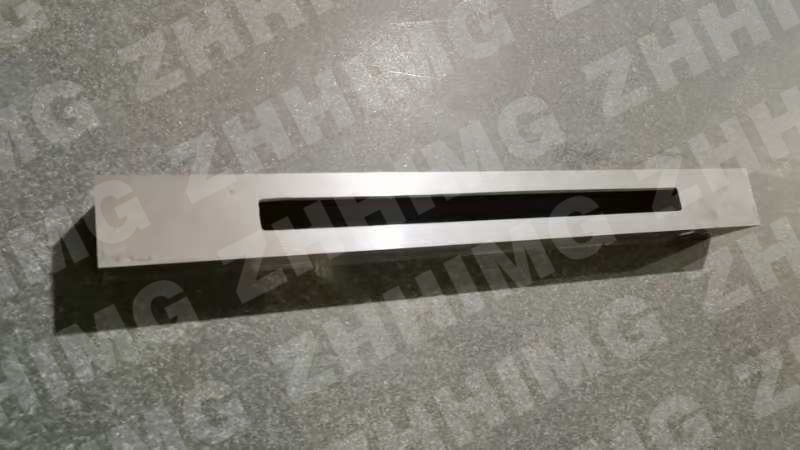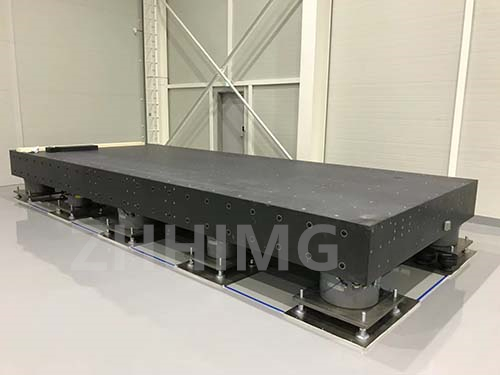In the field of ultra-precision motion control, the performance of air float ultra-precision motion module is highly dependent on the characteristics of its base. Granite precision base and ceramic base as two high-profile choices, each has unique advantages, in the stability, accuracy maintenance, durability and other key dimensions there are obvious differences.

Stability: natural compactness versus artificial precision
Granite formed after a long geological time, the internal structure is dense and uniform, and the minerals such as quartz and feldspar are closely intertwined. In the face of external interference, such as the vibration caused by the operation of large equipment in the workshop, the granite base can effectively block and attenuate with its complex crystal structure, which can reduce the vibration amplitude of the ultra-precision motion module transmitted to the air float by more than 80%, providing a stable operating basis for the module to ensure that it moves smoothly in the process of high-precision processing or detection.
The ceramic base is manufactured through an advanced synthetic process, and its internal structural uniformity is also excellent. The microstructure of some high-performance ceramic materials is nearly perfect, which can form an efficient damping effect on vibration. In some optical inspection equipment that is extremely sensitive to vibration, the ceramic base can suppress the vibration interference in a very small range to ensure the high-precision movement of the ultra-precision motion module of the air float, but in response to large-scale and high-intensity vibration, its overall stability is slightly inferior to that of the granite base.
Accuracy retention: the natural advantage of low expansion and the artificial wonder of high temperature stability
Granite is known for its very low coefficient of thermal expansion, generally at 5-7 ×10⁻⁶/℃. In the temperature fluctuation environment, the size of the granite precision base changes very little. For example, in the field of astronomy, the ultra-precision motion module for the fine-tuning of the telescope lens is paired with the granite base, even in the environment where the temperature difference between day and night is significant, it can ensure that the positioning accuracy of the lens is maintained at the sub-micron level, helping astronomers to capture the subtle changes of distant celestial bodies.

Ceramic materials also perform well in high temperature stability and low expansion characteristics, and the coefficient of thermal expansion of some special ceramics can even be as low as close to zero. Under the condition of high temperature or rapid temperature change, the ceramic base can maintain a stable size to ensure that the motion accuracy of the ultra-precision motion module of the air float is not affected. In the lithography process of semiconductor chip manufacturing, the lithography equipment needs to continue to operate in a high-precision environment, and the ceramic base can maintain the positioning accuracy of the module in the high-heat environment generated by the equipment, meeting the strict requirements of chip manufacturing for nanoscale accuracy.
Durability: High hardness of natural ores and corrosion resistant synthetic materials
Granite hardness is high, Mohs hardness can reach 6-7, with good wear resistance. In the materials science laboratory, the frequently used air float ultra-precision motion module, its granite base can effectively resist the long-term friction of the air float slider, compared with the ordinary material base, can extend the maintenance cycle of the module by more than 50%, greatly reducing the cost of equipment maintenance, to ensure the continuity of scientific research work.
Ceramic materials not only have high hardness, but also have excellent corrosion resistance. In some industrial environments where there is a risk of chemical corrosion, such as the ultra-precision motion module of the air float in chemical product testing equipment, the ceramic base can resist the erosion of corrosive gases or liquids, maintain surface integrity and mechanical properties for a long time, and its durability is better than the granite base in specific harsh environments.
Manufacturing cost and processing difficulty: the mining and processing challenges of natural stone and the technical threshold of artificial synthesis
The mining and transportation process of granite raw materials is complex, and the processing requires very high equipment and technology. Due to its high hardness and brittleness, it is easy to have problems such as edge collapse and cracks in cutting, grinding, polishing and other processes, and the scrap rate is relatively high, resulting in high manufacturing costs.
The manufacture of ceramic bases relies on advanced synthesis and precision machining technology, from raw material preparation, molding to sintering, each step needs precise control. The early investment in the development and production of high-performance ceramic bases is huge and the technical threshold is high, but once it achieves large-scale production, the cost is expected to be effectively controlled, and it has cost-effective potential in high-end applications.
Overall, granite precision bases perform well in overall stability and conventional durability, while ceramic bases have unique advantages in extreme temperature environment adaptability and corrosion resistance durability. The choice of the base should be based on the specific application scenario, environmental conditions and cost budget of the air float ultra-precision motion module.
Post time: Apr-08-2025
